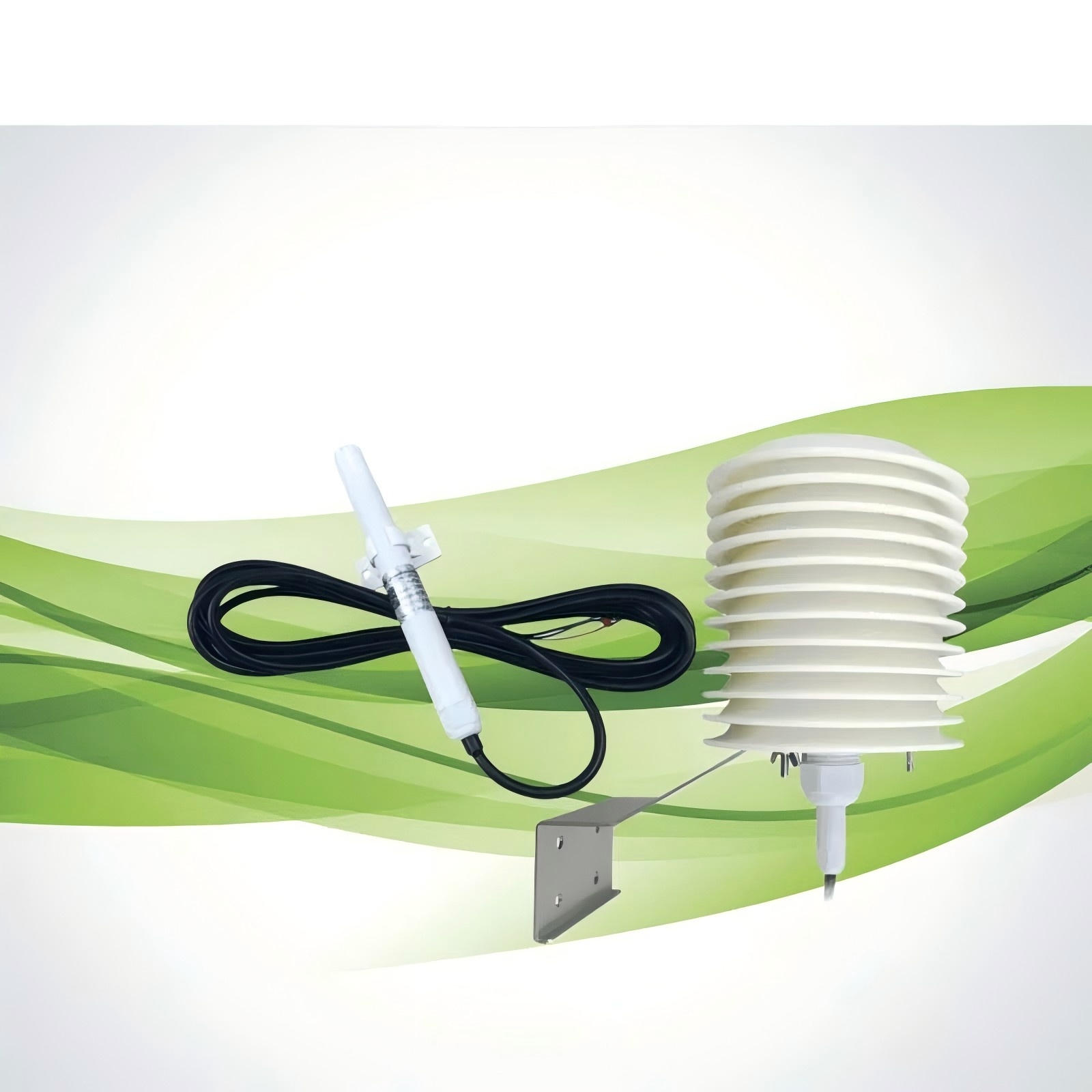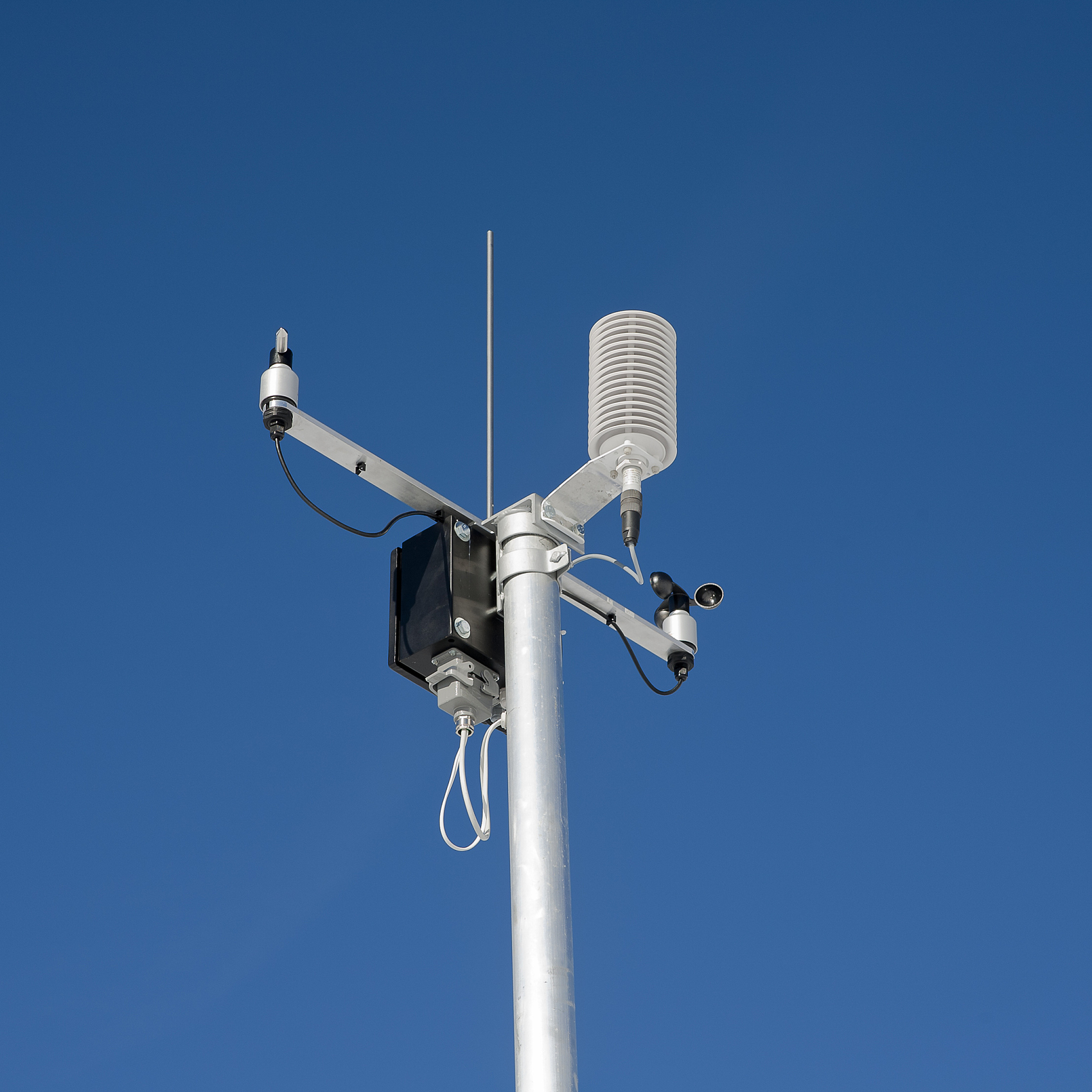Introduction:
Weather stations are important tools for checking weather conditions. One key measurement they provide is data on temperature and humidity. These two factors are important signs that affect many industries. These include agriculture, construction, environmental monitoring, and energy management.
Atmosphere temperature and humidity sensors are key parts of a weather station. They provide real-time data that helps with decision-making and improves efficiency. In this article, we will look at how these sensors work in weather stations. We will also discuss their important effects on different industries.

Atmosphere temperature and humidity sensors are devices that measure the temperature and moisture levels in the air. These sensors are typically part of larger weather station systems that collect various environmental data. They provide continuous, real-time readings that help track changes in the atmosphere, offering valuable insights into weather patterns.
Temperature Sensors: Measure the air’s temperature, typically in degrees Celsius or Fahrenheit.
Humidity Sensors:
Measure the relative humidity of the air, expressed as a percentage, indicating the amount of moisture in the atmosphere.
These sensors are designed for durability, accuracy, and long-term performance in varying environmental conditions.
1. Accurate Weather Forecasting:
Temperature and humidity data are critical for accurate weather forecasting. The interaction between temperature and humidity affects many weather phenomena, such as cloud formation, precipitation, and storm development. By having reliable readings, meteorologists can make better predictions about weather conditions, providing timely and accurate forecasts.
2. Optimized Agricultural Practices:
Farmers use data from temperature and humidity sensors to make informed decisions about planting, irrigation, and harvesting. The right combination of temperature and moisture is essential for crop growth.
These sensors help monitor microclimates. They allow farmers to change irrigation schedules. This protects crops from extreme conditions like frost or heat stress.
3. Enhanced Environmental Monitoring:
Temperature and humidity are key parameters for monitoring the health of ecosystems and understanding climate changes. These sensors help environmental agencies monitor changes in weather, humidity, and temperature. This information is important for studying how climate change affects plants and animals.
4. Industrial and Commercial Applications:
For industries like construction, manufacturing, and energy, atmospheric conditions can significantly affect operations. In construction, humidity levels can affect how long materials take to cure. Temperature data is also important for keeping workers safe in extreme conditions. In the energy sector, understanding temperature fluctuations is key to optimizing energy production and consumption, particularly in solar and wind energy systems.
5. Real-Time Monitoring for Public Safety:
Extreme weather conditions, such as heatwaves or high humidity, can pose serious risks to public health. Weather stations equipped with temperature and humidity sensors provide early warnings, allowing authorities to take necessary precautions. For example, monitoring these parameters can help predict heat stress and guide decisions regarding public advisories, emergency services, and outdoor activities.
1. Precision and Reliability:
These sensors are designed to provide highly accurate and real-time data, which is essential for effective decision-making. Accurate measurements are important.
They help us check small weather areas on a farm. They also help us predict large weather patterns. Reliable results depend on these measurements.
2. Cost-Effective Monitoring:
Weather stations with integrated temperature and humidity sensors provide continuous, automated data collection. This cuts down the need for manual checks. It makes sure you get reliable, current information. This conserves both your time and funds.
3. Versatility Across Industries:
Atmosphere temperature and humidity sensors are adaptable and can be used in a variety of applications across different industries. Whether you're an agricultural producer, environmentalist, or energy engineer, these sensors provide the data you need to optimize operations and make informed decisions.
4. Remote Monitoring and Data Access:
With advanced weather station technology, remote monitoring capabilities allow users to access real-time data from anywhere. This is very helpful in remote places like farms, wind farms, or offshore oil rigs. Continuous data collection is important for their operations.

Coda Sensor offers advanced atmosphere temperature and humidity sensors as part of their comprehensive weather station solutions. Coda Sensor’s sensors are made for precision and reliability. They give real-time data to help industries like agriculture, construction, and energy improve their operations.
Coda Sensor’s products are easy to use and built to last. They provide cloud-based access to weather data. This ensures you get the most accurate and useful weather information for your needs.
To improve your farm's climate monitoring or boost industrial safety, Coda Sensor offers high-quality sensors. These sensors work well with your current weather station setup.
The importance of atmosphere temperature and humidity sensors in weather stations cannot be overstated. These sensors help improve weather forecasting and farming.
They also ensure industrial efficiency and public safety. They provide the data needed to adapt to changing environmental conditions. Using this data, businesses, governments, and individuals can make better choices. They can also be more ready for the challenges of climate change.
With Coda Sensor solutions, your weather station will have the best temperature and humidity sensors. This helps you keep track of environmental changes and improve your operations.
Discover how real-time weather station data impr
Discover how Automatic Weather Stations (AWS) ar
Discover how CODA gas sensors are the invisible
Contact: Molly
Phone: +86-17775769236
Tel: 86-0731-85117089
Email: molly@codasensor.com
Add: Building S5, Aux Square, Yuelu District, Changsha City, Hunan Province, China
We chat